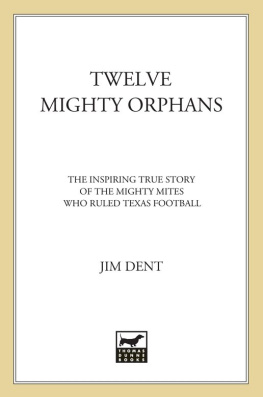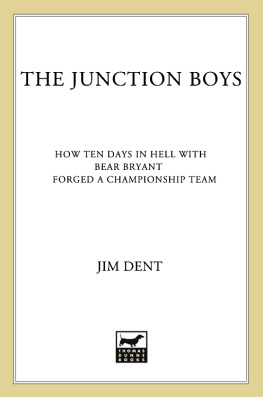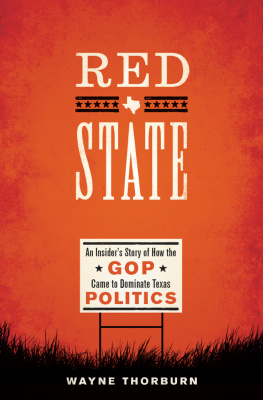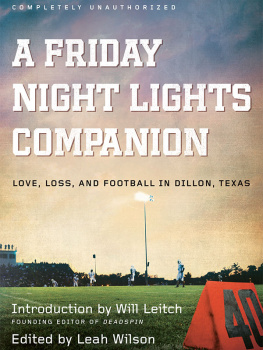Jim Dent - Twelve Mighty Orphans: The Inspiring True Story of the Mighty Mites Who Ruled Texas Football
Here you can read online Jim Dent - Twelve Mighty Orphans: The Inspiring True Story of the Mighty Mites Who Ruled Texas Football full text of the book (entire story) in english for free. Download pdf and epub, get meaning, cover and reviews about this ebook. year: 2007, publisher: St. Martins Publishing Group, genre: Detective and thriller. Description of the work, (preface) as well as reviews are available. Best literature library LitArk.com created for fans of good reading and offers a wide selection of genres:
Romance novel
Science fiction
Adventure
Detective
Science
History
Home and family
Prose
Art
Politics
Computer
Non-fiction
Religion
Business
Children
Humor
Choose a favorite category and find really read worthwhile books. Enjoy immersion in the world of imagination, feel the emotions of the characters or learn something new for yourself, make an fascinating discovery.
- Book:Twelve Mighty Orphans: The Inspiring True Story of the Mighty Mites Who Ruled Texas Football
- Author:
- Publisher:St. Martins Publishing Group
- Genre:
- Year:2007
- Rating:3 / 5
- Favourites:Add to favourites
- Your mark:
Twelve Mighty Orphans: The Inspiring True Story of the Mighty Mites Who Ruled Texas Football: summary, description and annotation
We offer to read an annotation, description, summary or preface (depends on what the author of the book "Twelve Mighty Orphans: The Inspiring True Story of the Mighty Mites Who Ruled Texas Football" wrote himself). If you haven't found the necessary information about the book — write in the comments, we will try to find it.
Now a movie starring Luke Wilson, Vinessa Shaw, and Wayne Knight!
Jim Dent, author of the New York Times bestselling The Junction Boys, returns with his most powerful story of human courage and determination:Twelve Mighty Orphans: The Inspiring True Story of the Mighty Mites Who Ruled Texas Football.
More than a century ago, a school was constructed in Fort Worth, Texas, for the purpose of housing and educating the orphans of Texas Freemasons. It was a humble project that for years existed quietly on a hillside east of town. Life at the Masonic Home was about to change, though, with the arrival of a lean, bespectacled coach by the name of Rusty Russell. Here was a man who could bring rain in the midst of a drought. Here was a man who, in virtually no time at all, brought the orphans story into the homes of millions of Americans.
In the 1930s and 1940s, there was nothing bigger in Texas high school football than the Masonic Home Mighty Mitesa group of orphans bound together by hardship and death. These youngsters, in spite of being outweighed by at least thirty pounds per man, were the toughest football team around. They began with nothingnot even a footballyet in a few years were playing for the state championship on the highest level of Texas football. This is a winning tribute to a courageous band of underdogs from a time when America desperately needed fresh hope and big dreams.
The Mighty Mites remain a notable moment in the long history of American sports. Just as significant is the depth of the inspirational message. This is a profound lesson in fighting back and clinging to faith. The real winners in Texas high school football were not the kids from the biggest schools, or the ones wearing the most expensive uniforms. They were the scrawny kids from a tiny orphanage who wore scarred helmets and faded jerseys that did not match, kids coached by a devoted man who lived on peanuts and drove them around in a smoke-belching old truck.
In writing a story of unforgettable characters and great football, Jim Dent has come forward to reclaim his place as one of the top sports authors in America today. A remarkable and inspirational story of an orphanage and the man who created one of the greatest football teams Texas has ever known . . . this is their storythe original Friday Night Lights.
Jim Dent: author's other books
Who wrote Twelve Mighty Orphans: The Inspiring True Story of the Mighty Mites Who Ruled Texas Football? Find out the surname, the name of the author of the book and a list of all author's works by series.







